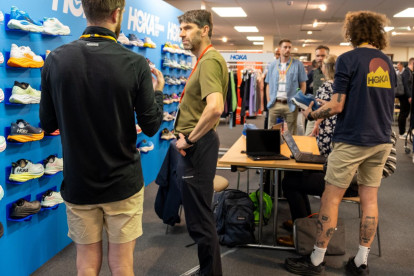The importance of a well-ventilated meeting room
24 Jul, 2024 - 3 min read
Keeping Cool & Comfortable
Now that the summer is fast approaching, offices up and down the UK will be facing the same challenge: keeping the workforce cool and comfortable. Hot, stuffy working environments are not only counterproductive, but they can also have a negative effect on an employee’s health and wellbeing.
Lack of an insufficient fresh air supply can lead to tiredness, lethargy, headaches, dry or itchy skin and eye irritation, according to a comprehensive report on the matter from the University and College Union.
While it is crucial to provide a ventilation in the general workplace, it is even more important to do so in a meeting room or training room. Of course, a training session or meeting may include a large group of people in a confined space, so a supply of fresh air and the need to maintain a comfortable temperature is essential.
When choosing a training or meeting room then, ventilation and temperature control should be high up on your agenda.
Firstly, you need to take into account how many people will be attending the gathering. Once you know this, you will also need to estimate the total number of people that could be present within the meeting room at any one time. Once you have these basic figures, you can than start to seek out a facility that will comfortably provide your party with sufficient fresh air and temperature control.
As a guide, the Workplace Health Safety and Welfare Regulations 1992 (WHSW) states that “the fresh air supply rate to your workplace should not normally fall below five to eight litres per second, per occupant.”
The next steps, as the UCU suggests, are to assess certain factors in order to calculate how much fresh air you will need per person. These include: the activity itself (will there be any physical training involved?), the amount of floor space available for each individual and whether or not there will be any sources of airborne contaminants in the air (for example: process machinery, outdoor traffic, furnishings, furniture).
It is easy to assume that the best way to ensure that a room has adequate ventilation is to pick one with external windows. However, while windows will undoubtedly provide a fresh air source, certain problems can arise for this with the main one often being that external noise could disrupt the meeting or training session.
Rooms that combine mechanical and natural ventilation can often be the best solution to this. Many modern natural ventilation systems make use of noise reduction technology and acoustic attenuation to ensure that external noise is kept at a minimum while a constant stream of fresh air is drawn into the room.
In terms of temperature, it’s vital to seek out a meeting space that allows you to have full control over the room at all times. Air conditioning is one of the most common ways to achieve this, although modern natural ventilation systems are also adept at regulating temperature - the latter is also much more green.
Ideally, you want a room that will enhance your meeting session, not inhibit it so it is crucial to assess all of the above factors before making your decision.


